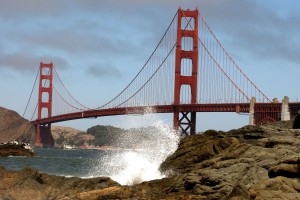Golden Gate Bridge toll collectors finished their final shifts early Wednesday morning as the bridge moved to an all-electronic, cash-free payment system.

To remind commuters of the change, a 27-foot LED sign has been installed atop the toll plaza that says: “Do Not Stop, Automatic Tolling.”
In another change for drivers, the bridge’s board of directors last week approved raising the speed limit through the toll plaza from 15 to 25 mph to improve traffic flow across the bridge.
How to Pay Golden Gate Bridge Tolls
- Commuters can still use the existing FasTrak system or open a new account and pay a toll of $5. All other payment methods cost $6. Bridge spokeswoman Mary Currie says that about 70 percent of southbound motorists on the bridge already use FasTrak.
- Drivers can open a License Plate Account that charges a registered credit card every time the car crosses the bridge.
- Motorists can make a one-time payment up to 30 days before or up to 48 hours after crossing the bridge online, by phone or eventually at “cash payment locations.”
- Drivers can pay a toll invoice that is mailed to the car’s registered owner after the crossing with the help of cameras that capture passing cars’ license plate numbers.
More information about the electronic conversion, as well as directions for how to set up an account, can be found on the bridge’s website at www.goldengate.org/tolls.